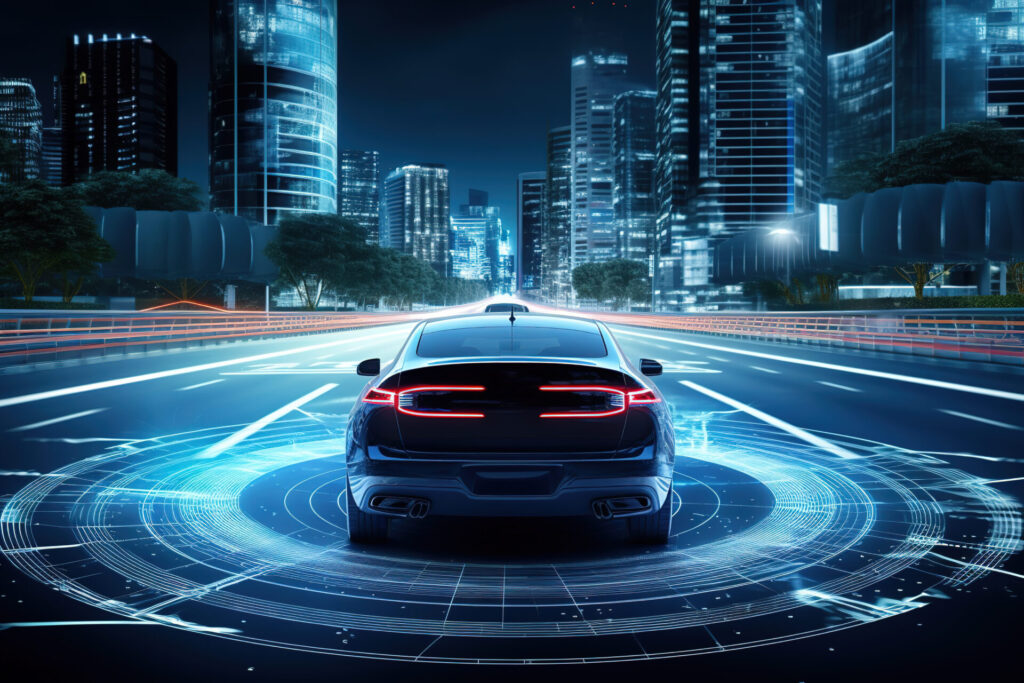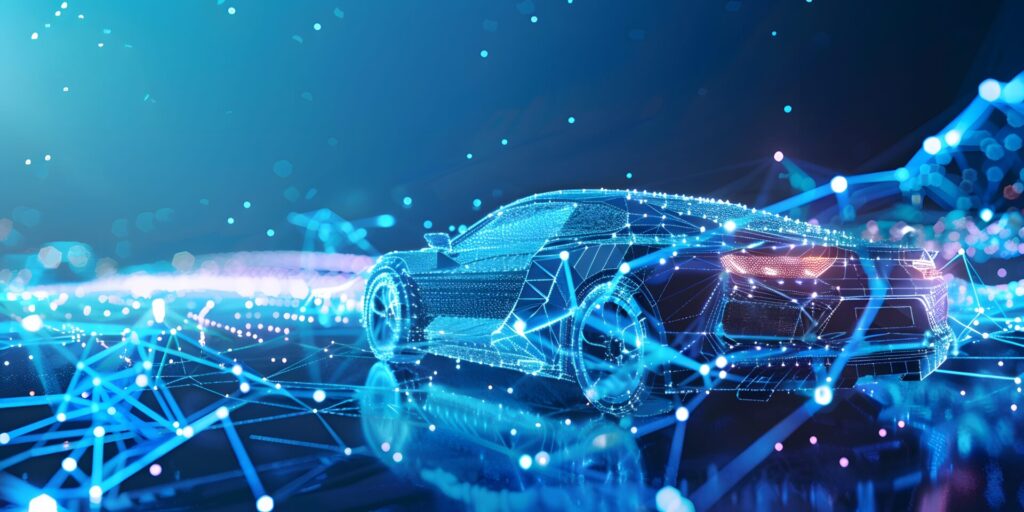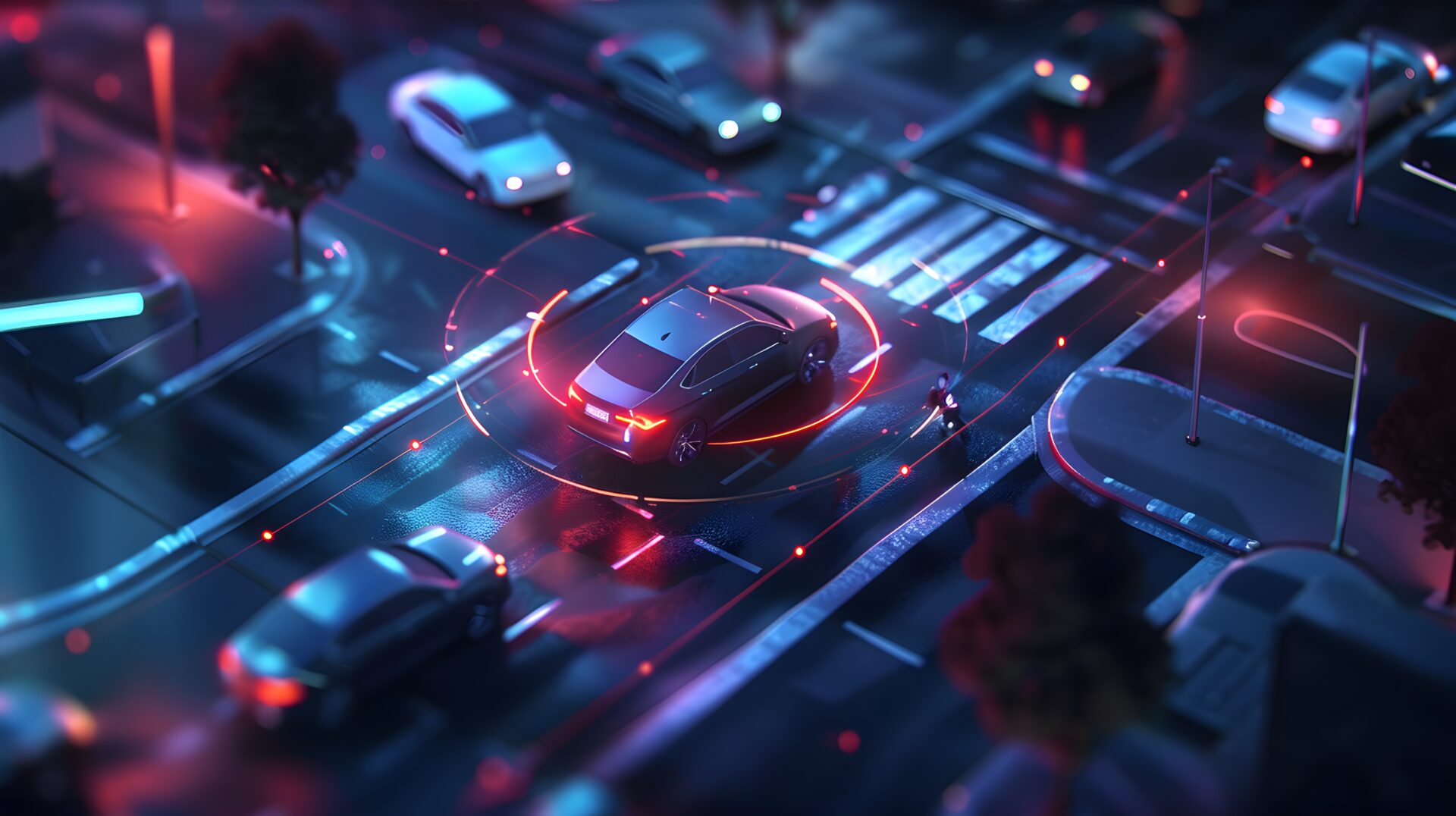
- Optical Products
The Basics of LiDAR, the Next Generation of Automotive Sensors
Contents
- 1 What is LiDAR, the next generation of automotive sensors?
- 2 Looking ahead to the spread of Level 3 autonomous driving and beyond
- 3 The advantages of LiDAR over other sensors
- 4 The advantages of new FMCW distance-measuring technology
- 5 Flash LiDAR’s potential for cost and size reduction
- 6 Contributing to autonomous driving with light manipulation technology
What is LiDAR, the next generation of automotive sensors?
Recent years have seen worldwide progress in the research and development of LiDAR sensors as a key technology for autonomous vehicles. The name is an acronym of “light detection and ranging.”
LiDAR sensors direct light such as near-infrared at objects to scan them and use receivers to collect scattered and reflected light. This enables them to measure the speed, distance, and shape of objects.
The principle is the same as the use of radar to measure the distance to an object by transmitting radio waves and receiving reflections. But by using light, which has wavelengths much shorter than those of radio waves, LiDAR is able to measure distances with high precision and even determine the shapes of objects that are too small for radar to detect.
LiDAR was developed in the 1960s and found applications such as the creation of topographic maps in the aerospace field. It is also used in meteorology due to its ability to detect small particles such as clouds and aerosols. And in recent years, rapid advances in self-driving technology have led to greater focus on LiDAR as a way to detect obstacles, other vehicles, people, and more from a distance.
Looking ahead to the spread of Level 3 autonomous driving and beyond
Autonomous driving systems for automobiles are categorized into Levels 1 to 5, and LiDAR is seen as a way to achieve autonomous driving of Level 3 and above. In Level 1 and Level 2 autonomous driving, the human driver remains in control with the system acting only as a support. It assists with various driving actions, such as automatically braking when a collision with an obstacle is imminent, maintaining lane position in hands-off mode under certain conditions, such as on highways, adjusting speed to follow the car in front, and safely overtaking slower vehicles. The systems that enable autonomous driving Levels 1 and 2 are called ADAS (advanced driver-assistance systems).
In contrast, the system replaces the human driver in the primary role for autonomous driving Levels 3 to 5. The driver can depend on the system to drive the car and can take their eyes off the road and do other things while the vehicle drives itself.
As of 2024, more and more of the world’s major automakers are releasing Level 2 autonomous vehicles with hands-off driving. However, very few Level 3 and above autonomous vehicles are available globally. In Japan, a domestic automaker released just one model in 2021 as a lease-only vehicle with a limited run of 100 units, but production ended in 2023. No other automakers have yet to attempt anything similar. As automakers all over the world compete to develop the technology for Level 3 and above autonomous driving, various countries are working to revise traffic laws to prepare for the future.
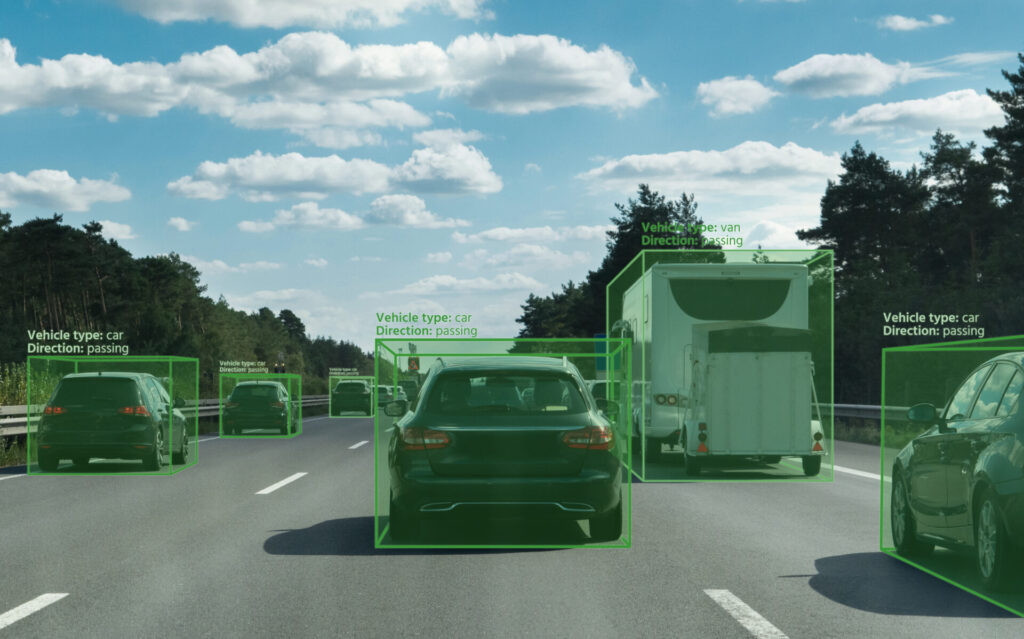
The advantages of LiDAR over other sensors
Next, we will explain the basics of LiDAR. To enable autonomous driving, it is necessary to detect information such as other vehicles on the road, pedestrians, traffic signs, road lanes, and obstacles in real time. The autonomous vehicle is equipped with various sensors including cameras, millimeter wave radar, ultrasonic sensors, and LiDAR to collect information from its surroundings. Multiple sensors are used because each kind has its strengths and weaknesses. Camera performance in image recognition has improved dramatically when combined with AI, but cameras still have drawbacks—performance declines at night and in inclement weather, and it is difficult to accurately gauge the distance to an object. Millimeter wave radar can measure distance to an object even in bad weather, but it cannot accurately recognize shapes and has difficulty detecting objects with low radio wave reflectivity and nearby objects. Conversely, ultrasonic sensors can only detect nearby objects within roughly 10 meters and are primarily used for sonar when moving backward and forward while parking.
LiDAR, on the other hand, can accurately detect distance to objects such as other vehicles, obstacles, and pedestrians from 200 to 300 meters away and can accurately detect their shapes in 3D. Unlike cameras, it can detect objects at night. And when used with high-resolution maps, LiDAR can maintain a constant and accurate position of the vehicle. As a result, it is considered to be necessary for autonomous driving of Level 3 and above.
The advantages of new FMCW distance-measuring technology
Currently, LiDAR sensors use a method called ToF (Time of Flight) to measure distance. In ToF, the LiDAR sensor releases a pulse of light and determines distance by measuring the amount of time until the receiver detects the light reflected by an object. This method has disadvantages, however—it can easily be affected by other light sources and performance decreases in bad weather such as rain and fog.
There is hope that a measurement method called FMCW (Frequency Modulated Continuous Wave) can resolve those issues. In FMCW, the LiDAR sensor releases frequency-modulated light. When the light reflects off an object and returns to the receiver on the LiDAR sensor, its frequency differs from the initially released light. The distance and speed of the object can be calculated from the difference between the two frequency modulations.
In comparison to ToF, FMCW can detect weaker light signals, is affected less by other light sources, rain, and fog, and is able to measure distances to more distant objects. The ability to calculate an object’s speed is also a large advantage, made possible by the change in frequency due to the Doppler effect when an object such as another car is moving toward or away from the vehicle. Due to these advantages, FMCW is seen as the next generation of LiDAR and has become the focus of worldwide research and development efforts.
While LiDAR is seen as the leading contender to power the sensors on the next generation of autonomous vehicles, its use is currently limited to a few luxury cars. There are two main reasons for this—high-performance LiDAR is extremely expensive at several hundred thousand yen, and the large devices can only be mounted in certain areas, creating limitations on exterior designs.
Flash LiDAR’s potential for cost and size reduction
In addition to the different distance measurement methods, there are many other LiDAR variants that have differences such as laser light and light scanning methods. One scanning method currently being developed is called “flash.” The earlier type of LiDAR, known as mechanical, scans objects in a wide area by rotating mirrors with a motor to project light. Flash LiDAR, on the other hand, detects objects by projecting diffused laser light. It is expected that flash LiDAR will lead to reductions in size and manufacturing cost because motors and other movable parts are not needed.

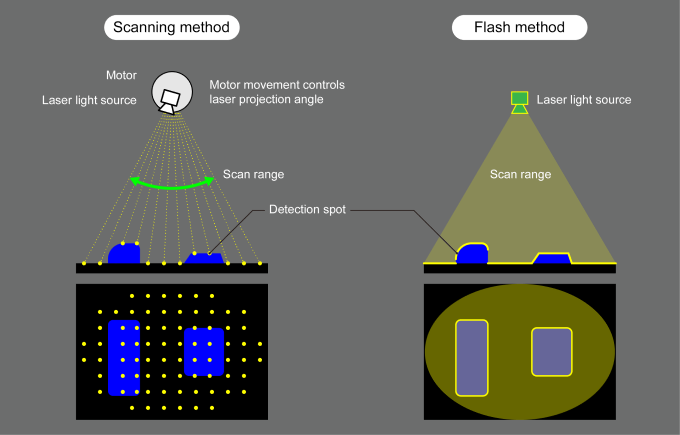
Contributing to autonomous driving with light manipulation technology
At Dexerials, we have been working for many years on our technology to freely manipulate light. As a result, we now have a wealth of products and knowledge that can contribute to the development of LiDAR technology to support the next generation of autonomous driving.
Our anti-reflection film widely used on displays and smartphones can be applied to LiDAR to suppress light noise such as flares as well as raise the transmission rate for the desired frequency of light. Accurate control of light diffusion is necessary for flash LiDAR, and the diffuser technology we developed for projectors can be applied here as well. In addition, the high-precision fixing technology we developed using specialized adhesives and precision bonding resins for smartphone camera parts and digital camera lenses can be used to accurately secure sensors such as LiDAR and vehicle-mounted cameras and enable stable detection.
Dexerials will continue to contribute to the development of autonomous driving technology to work toward a future where people can travel safely, conveniently, and freely.
- SHARE
 Back to top
Back to top  Contact us
Contact us 













